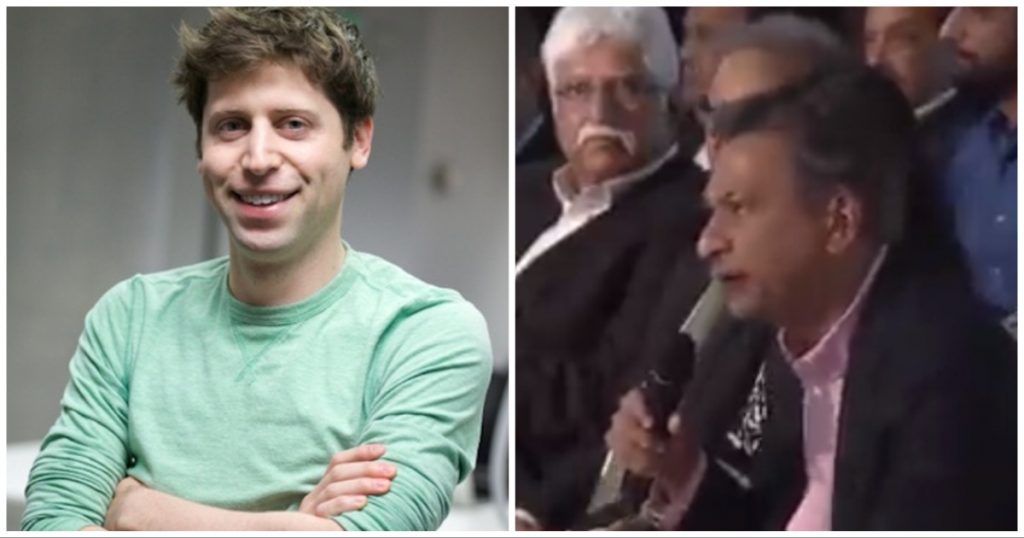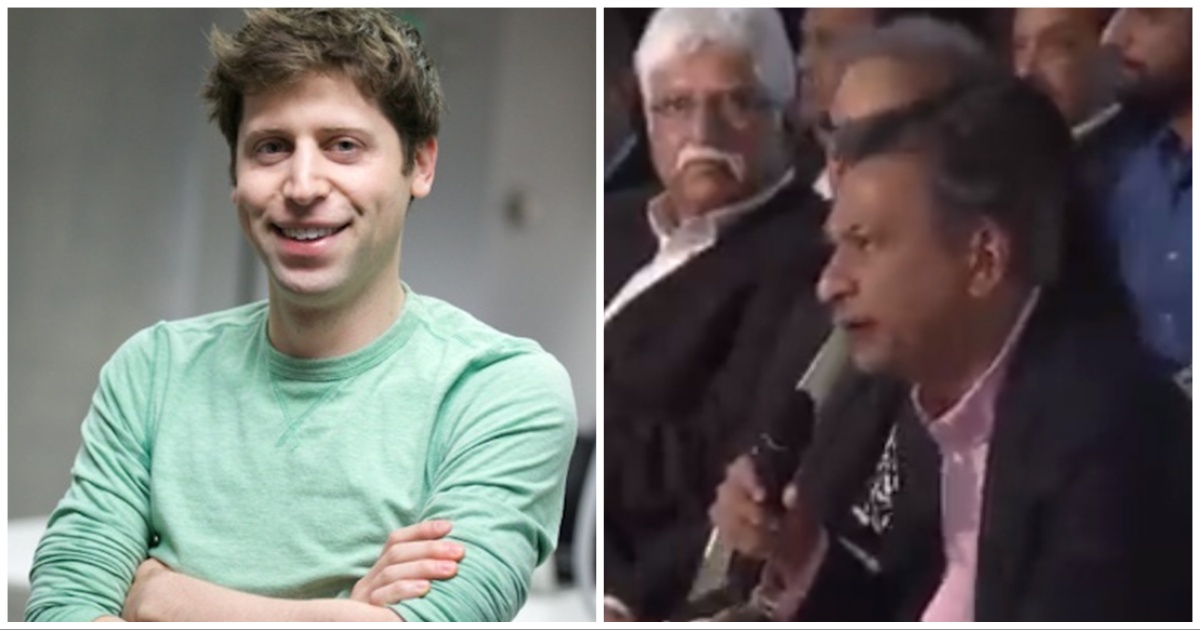ChatGPT might’ve come out of nowhere to become the quickest product in history to reach 100 million users, but its creator says that it could be hard for any Indian company to do an encore.
Sam Altman, the CEO of OpenAI which has created ChatGPT, has hinted that it might be “hopeless” for a small Indian company to build a foundational model and compete with it. He was answering audience questions at the ET Summit on his trip to India when he made the observation.

“If we want to build foundational models, how should we think about that,” Altman was asked by Sequoia India’s Rajan Anandan. “Where is it that a team from India — three supersmart engineers, with not a $100 million, but $10 million — could actually build something truly substantial,” he asked.
“Looks the way this works is: we’re going to tell you it’s hopeless to compete with us in training foundational models and you shouldn’t try,” Altman replied. “And it’s your job to try anyway. I believe both of those things,” he added.
“(But) I think it’s pretty hopeless,” he further clarified as the audience had laughed.
Sam telling India they can’t compete with ClosedAI is peak hubris — or pure honesty! 🤷🏼♂️
Indian government & VC complex should launch a dozen Manhattan projects backing top engineers to prove him wrong — 🇮🇳 pride! pic.twitter.com/m6IdW6AbwD
— @jason (@Jason) June 8, 2023
Now Altman has good reason to believe it’s hard to compete with ChatGPT. As per all user accounts, and even benchmark data, GPT-4 is currently the best foundational model out there, significantly ahead of competitors like Google’s Bard and Anthropic’s Claude. GPT-4 is also the biggest model in existence — while its size has never been revealed, it’s estimated to have a trillion parameters, which is an order of magnitude ahead of all other models. Given how it can take several months, and millions of dollars in compute costs to train a foundational model, Altman might be right in thinking that it could be “hopeless” for a small Indian team, with a limited amount of funding, to catch up.
But it’s not as though there aren’t small global teams making foundational models of their own. Several small teams with limited funding have created some impressive models. Some of these are derived from Meta’s LLaMa model, such as Vicuna, Alpaca and GPT4All. Others have been created from scratch — Falcon, which is a foundational model created by researchers in UAE, currently is the best open-source model as per benchmark results. And there are areas apart from foundational text models where OpenAI has been conclusively beaten — its image generation model Dall-E has been largely forgotten, upstaged by alternatives like Stable Diffusion, which is open-source, and Midjourney, which has been created by a team of just 12 people.
Altman’s comments drew some sharp reactions online. “Sam telling India they can’t compete with ClosedAI is peak hubris — or pure honesty!” tweeted VC Jason Calacanis. “Indian government & VC complex should launch a dozen Manhattan projects backing top engineers to prove him wrong — Indian pride!” he added. His tweet was liked by Snapdeal’s Kunal Bahl and Times Internet CEO Satyan Ganjwani.
Sam telling India they can’t compete with ClosedAI is peak hubris — or pure honesty! 🤷🏼♂️
Indian government & VC complex should launch a dozen Manhattan projects backing top engineers to prove him wrong — 🇮🇳 pride! pic.twitter.com/m6IdW6AbwD
— @jason (@Jason) June 8, 2023
Rebright Partners’ Brij Singh likened the effort required to build India’s own foundational model to the nuclear tests India had conducted in 1974. “I wanted to share a few thoughts on SamaA’s comments in Delhi..50 years ago, we achieved a major feat in the Nuclear race, Project Smiling Buddha. A scrappy team of Indian Scientists conducted our very first test of an Atomic Bomb, under utmost secrecy and against immense pressure from the Americans. Perhaps, what is needed today is a similar effort, but we need not be defensive about it, or do it under secret. But a response must be made, especially to something that could be an existential threat,” he tweeted.
But while Altman’s comments might seem harsh, most people agree there’s a degree of truth to them. India has no meaningful research in the LLM space, and there are hardly any comapnies working on the nuts and bolts of AI technologies in the country. There are no open-source AI models that have come out from India that are anywhere close to ChatGPT, and it could be hard for any Indian companies to match giants like OpenAI and Google in funding. But what India has is talent — the seminal foundational paper on transformers, which has led to the creation of models like ChatGPT, was written by Ashish Vaswani, who was a graduate of Birla Institute of Technology, Mesra, and Niki Parmar, who had a BE from the Pune Institute of Computer Technology. If India can harness its talent, combine it with some world-class research, and finally create a company with raises sufficient funding, it could eventually compete with ChatGPT. Sam Altman has thrown the gauntlet — it’s now up to India to respond to the challenge.
